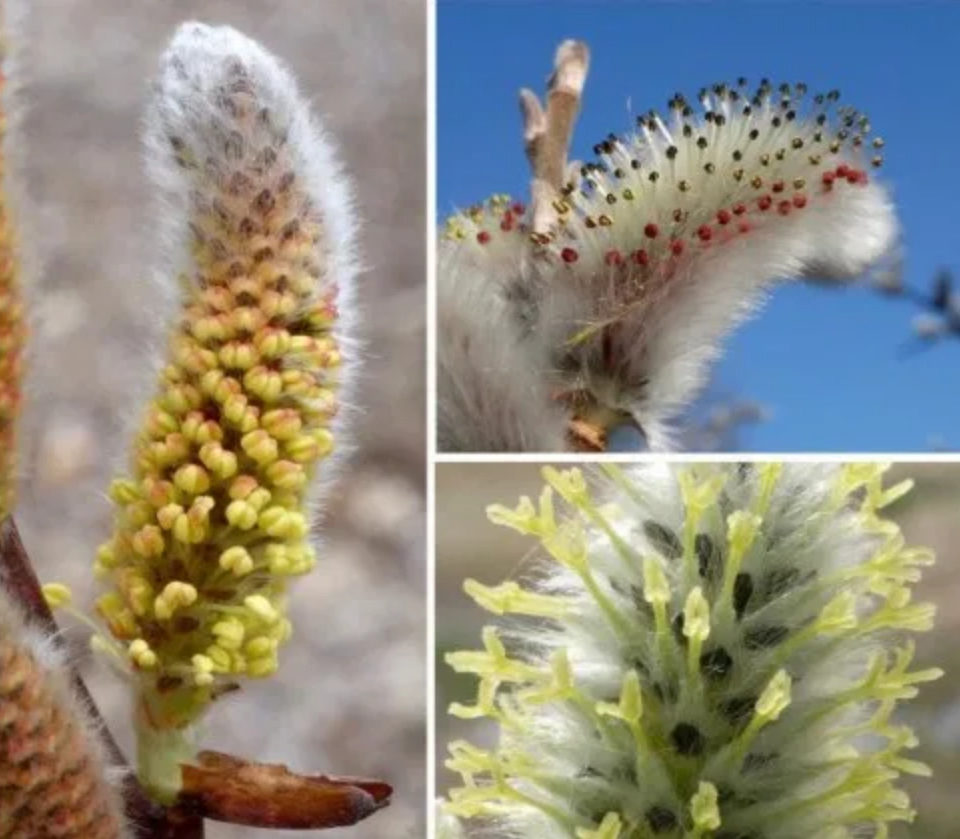Nothing announces the arrival of spring quite like the willows (Salix) at the Arnold Arboretum. Willow species are most at home in moist to swampy conditions. Hence, the core of the willow collection can be found around and in the wet meadow between Willow Path and Meadow Road. Prepare to get your feet wet and take in some of these willows while they are close to their peak of flowering.

Willows are dioecious, with individual plants bearing either male (pollen-producing) or female (seed-producing) flowers. These unisexual flowers are “reduced,” with no sepals or petals, and are borne in catkins, a type of inflorescence distinguished by large numbers of flowers in a compact arrangement. The male catkins conjure up a fireworks show, with beautiful yellow to orange to red anthers (pollen sacs) that then split open to display bright yellow pollen inside.
Pictured below are the pollen-bearing catkins of Salix udensis ‘sekka’ (Japanese fantail willow; 671-67*A) and Salix gracilistyla (rosegold pussy willow; 930-74*A), and a close-up of a female catkin of Salix cinerea (gray willow; 60-95*B) showing the gaping maws of two-parted stigmas of the flowers. Our willow sex ratio at the Arnold is skewed, with many more pollen-bearing plants than seed-bearing plants. Could this be evidence of horticultural gender bias?
From “free” to “friend”…
Established in 1911 as the Bulletin of Popular Information, Arnoldia has long been a definitive forum for conversations about temperate woody plants and their landscapes. In 2022, we rolled out a new vision for the magazine as a vigorous forum for tales of plant exploration, behind-the-scenes glimpses of botanical research, and deep dives into the history of gardens, landscapes, and science. The new Arnoldia includes poetry, visual art, and literary essays, following the human imagination wherever it entangles with trees.
It takes resources to gather and nurture these new voices, and we depend on the support of our member-subscribers to make it possible. But membership means more: by becoming a member of the Arnold Arboretum, you help to keep our collection vibrant and our research and educational mission active. Through the pages of Arnoldia, you can take part in the life of this free-to-all landscape whether you live next door or an ocean away.

